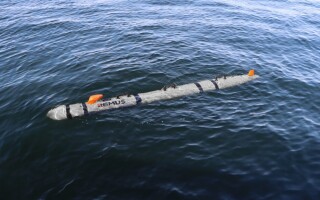Project aims to drastically improve computing by improving topological material, reducing noise
NewsJune 15, 2018
MALIBU, Calif. Research and development lab HRL Laboratories -- a joint venture of Boeing and General Motors -- is embarking on a project aimed at developing topological building blocks that will keep fragile quantum information safe from environmental effects.

The project, dubbed "Suppressing Trivial Edge Conductance in 2D Topological Materials," is described by Minh Nguyen, HRL’s principal investigator: “Our aim by improving 2D quantum-well topological materials will be to provide a novel building block for quantum computation that does not need quantum correction to mitigate noise. If we can suppress edge conductance in this material, it can then be used in devices and circuits that can protect quantum information from environmental fluctuations and disturbance.”
Most current quantum computational approaches rely on one qubit -- a qubit is a single bit of quantum information -- for quantum calculation and 50 to 100 qubits to correct fluctuations caused by the environment. but current approaches don't protect the data from disturbances.
The specific goal of this project is to unambiguously reveal the quantum spin Hall regime, which can produce damaging interference, and helical edge states of 2D topological materials and suppress nontopological edge conductance, a source of environmental noise, to a low enough level to observe long-lived quantum excitations, which preserves the sensitive information in the qubit.
“Imagine the topological material as a doughnut with a qubit encoded in the hole," Nguyen posits. "Environmental disturbances are squeezing, pressing, or deforming the doughnut, but the doughnut’s identity -- the hole storing quantum information -- remains consistent, even if the doughnut changes drastically to the shape of a mug with a handle. The beauty of topological encoding is that the qubit stays safe and does not change with deformation. With these topological qubits, quantum computation could be accomplished with far fewer total qubits than are needed in other approaches that require extra qubits for quantum error correction.”
Nguyen concludes: “The nontopological edge conductance can be regarded as a showstopper for the 2D quantum well material system. If we succeed, it will revitalize the promise of 2D topological materials and reopen potentially simpler and more scalable device designs for topological qubits than those currently being pursued. Readily scalable topological operations could revolutionize the quantum information field.”







